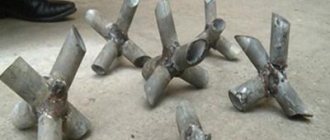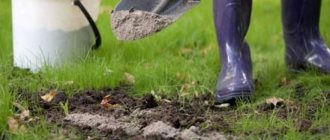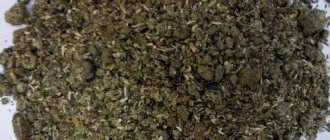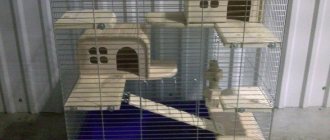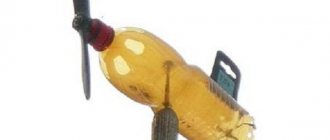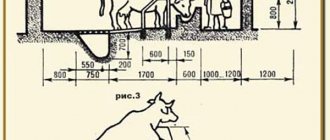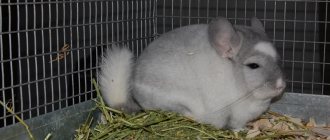The easiest way to get rid of the most common, but far from the most favorite household pest, is a mousetrap: you can make one with your own hands using available materials. Ease of operation, ease of manufacture, the ability to use unnecessary trash for noble purposes and high efficiency allow us to classify homemade mousetraps as folk art.
- How to catch a mouse in an apartment Baits for mousetraps
- Step 1
- Step 1
- Step 1
Mousetrap made from a plastic bottle
The material is accessible, easy to process, and most importantly, it produces a humane mousetrap.
The rodent remains alive, which can be important for a certain circle of people. Some people simply want to get rid of pests without killing them, while others specifically catch them to feed predatory animals. From the rich assortment, we will consider the three most popular models offered by craftsmen: The bottle is cut across closer to the neck, but not all the way. It looks like a hinged lid. A locking mechanism is being made. Transverse elements, such as wooden cooking skewers, are inserted from both cut edges. At the exit, they are tightened with an elastic band for money. The result is a structure that tends to close. A cord is attached to the neck, which pulls the upper part. Its other end in the form of a loop is attached to the bait holder. You can use a toothpick. The homemade mousetrap is ready for use. When the mouse grabs the prepared tasty morsel, the loop flies off the holder and, due to the elastic bands, the bottle collapses, and the rodent remains inside.
A hole is made in the roof and bottom. Any suitable rod is inserted into it. This creates the axis of rotation. A simple design is placed above a bucket, to which a board or other suitable object is placed. This will be the mouse approach. The principle of operation is as follows: the rodent will rise to a bottle that has been pre-treated with a product attractive to the pest. When the mouse runs onto the bottle, the simple design flips over. The animal falls into a bucket, from which it will not be possible to get out on its own.
Another simple way is to use the see-saw principle. The bottle is pierced with wire approximately in the middle. The axis of rotation is made with the expectation that the structure is installed above the support by 1-2 cm. On the side of the neck, a block is fixed end-to-end, which is the approach to the hole. The mouse calmly gets inside to the bait. When you try to get back out, the neck lowers under the influence of gravity, and a pre-fixed block blocks the way.
The neck of the bottle is cut off. A hole is made at the edge and a cord is tied, the length of which is determined experimentally. The other end is tied to a support or weight, with the expectation that if a mouse hits the bottle, it will remain in a hanging position. The device is placed on elevated places, for example on a table, shelves, window sills so that the center of gravity is as close to the edge as possible. The bait is placed on the bottom. When the pest tries to get to it, the structure falls from the support and hangs on the cord in a vertical position before reaching the floor.
Any of the above methods is effective. Adjustments can be made to the design based on the materials at hand. Only the principle of how to make a mousetrap with your own hands is proposed, and the details of a specific design may have features.
Homemade mousetrap (step by step instructions)
You can purchase a ready-made version for 150 - 500 rubles, but it will quickly become filled with mice. And many will not be satisfied with such large expenses, since they will have to change the product often. Therefore, it is much cheaper to make it yourself.
Materials for making adhesive mass:
- 4 grams of glycerin;
- 30 ml ethyl alcohol;
- 1 liter of distilled water;
- 100 grams of wheat flour;
- 5 grams of gelatin.
Manufacturing stages:
- Gelatin is soaked in water for 24 hours;
- We use a metal container with the formed composition;
- Add wheat flour;
- Cook using a water bath. This process continues until an adhesive composition is formed;
- Add ethyl alcohol and glycerin. All this is mixed until completely dissolved.
This composition is spread on the surface of a sheet of cardboard. And it is placed for a day in the place where the mouse is active. After this time, it is necessary to remove the caught mice and replace the glue on the cardboard. This is its only drawback. It dries quickly compared to purchased products of this type.
But its advantage is moderate waste, and a bonus in the form of caught cockroaches, and other beetles, centipedes.
Harm from mice
These pests need to be controlled for several reasons. Firstly, many people are afraid of mice, especially housewives. When mice appear, they panic. In addition, there are a number of factors that are decisive. For example:
- Damage to household items. They were called rodents for good reason, since they are capable of chewing objects in the house, regardless of the material they are made of. This could be furniture, electrical wires, children's toys, shoes, etc. They especially love foam. If someone has made a renovation and used polystyrene foam as insulation, then you need to be prepared to receive such pests.
- Possibility of fire. Mice can easily eat the insulation of electrical wires, which can ultimately lead to a short circuit and fire. They can chew the power wires of many electrical appliances, so you need to regularly inspect them to ensure the integrity of the insulation.
- Presence of pathogenic microorganisms. The saliva of rodents can contain various microorganisms that can cause typhoid, cholera, plague or ordinary poisoning. In addition, mice are carriers of fleas, which prefer to feed on human blood.
- Rodents spoil food and water. This happens because mice everywhere leave traces of their vital activity in the form of feces, which are saturated with bacteria and viruses. If an animal drinks water from a cup, it can be hazardous to health.
- Mice leave behind an unpleasant odor. This is a kind of “mouse” smell, which is distinguished by its peculiarity. It is by this that you can determine that there are mice in the house. If it gets absorbed into furniture or some things, it is quite difficult to get rid of it. Some people may experience allergy attacks, which are expressed in the form of vomiting. In any case, this leads to constant discomfort.
Therefore, we can safely say that rodents cause significant harm, depriving a person of peace and comfort.
What you will need
- a bucket (the bigger the better) or a tall aquarium
- a piece of board or cardboard (dimensions no less than 5x20 cm)
- bait (grain, crumbs, flakes, etc.)
It is worth noting that for rats it is better to take a deeper container. A DIY bucket mousetrap should also work for her.
How to make mouse traps with your own hands
Homemade mousetraps made from plastic bottles are the simplest, but not the only way to get rid of night noises, unpleasant odors, and a continuous feeling of disgust. No special devices, tools, or equipment are required for the manufacture. The maximum you need to have on hand is a PET bottle or jar, a knife, and thread. Naturally, prepare bait. It doesn't have to be kneaded. Just crumble everything listed above, and the mice will come out of their shelter as soon as the house is quiet.
Mouse trap from a jar
A regular half-liter or liter glass jar will do. Well, another coin worth 2 or 5 rubles. A mousetrap from a jar is made as follows:
- Place some bait mixture on the table or floor.
- Cover it with a jar so that there is nothing extra outside.
- Place the neck on the edge of the coin and wait.
The design is unstable, but that's what's good. The rodent, wanting to get a treat, climbs into the jar, touches a coin, which immediately falls. Now the mouse is a hostage. Nothing will happen to her, especially since there is something to eat there. A similar structure can be made from a bucket or any other container. The main thing is to lay a piece of linoleum, plywood, etc. under it. This is necessary to take the prisoner out into the garden or wasteland and simply release him.
Bottle trap
At the dacha, in the pantry or in the garage there will always be a plastic bottle, which will be a mousetrap, which can always be made at home. To make it, do the following:
- A mouse trap made from a plastic bottle will work if you wash the container first. The pungent odor will overpower the aroma of the luring mixture, which will not be able to attract the victim.
- Take a sharp knife and make a side cut at the top near the neck. You should not burn or scorch, as the acrid smoke will cause the bait to become uninteresting.
- Tie a plastic bottle mouse trap to a stationary object on the table, and put some bait inside. Now install it so that the bottom is outside the table.
As soon as the mouse climbs inside and gets to the food, the container will fall and hang in a vertical position. The mouse won't be able to get out. All that remains is to take the trap and take it outside the site. Now it can be used more than once.
From a bucket and a bottle
In this case, in addition to a plastic bottle, you will need a bucket, tape, a board and a metal rod. This is perhaps the most interesting way to catch a mouse. The step-by-step instructions look like this:
- Make holes in the lid and bottom of the container.
- Thread the rod so that it coincides with the longitudinal axis and does not interfere with rotation.
- Fill half a bucket of water and place a rod on the sides.
- Tape the bait in the middle of the container.
- Install the board in the form of a kind of ramp.
The principle of operation of such a mousetrap made from a plastic bottle, assembled with your own hands, is simple. The rodent, smelling the smell of food, climbs to the edge of the bucket. Unable to reach, he tries to lean on the walls of the bottle, which rotates with the slightest effort. The mouse falls into a bucket of water, from where there is no way to get out. The only drawback of this method is the need to take the “prey out of the yard” in the morning.
Video: a simple and effective DIY mousetrap
To assemble a mousetrap from a plastic bottle with your own hands, it is better to use the advice of a professional. To do this, watch the video file, where you will be told in detail about the manufacturing process and the principle of operation. Do it together with the master, use his advice and recommendations. Make several different traps at once. Don't put in too much food. Its task is to lure with smell, but nothing more. You've already read the rest.
Of course, there are many ways to open the “mouse hunting season” on the Internet, but these three are the most popular and effective. The thing is that the materials are always at hand. No special skills required. There is no need to use mechanical means. Everything is designed for tricks. But most importantly, there is no need to kill a living creature, which you then simply release away from the house. Using these three methods, you not only get rid of parasites, but also do not harm nature.
Dangerous field mouse at home
Although the field mouse is indeed small, it can turn out that the damage it deals is really great. And the point here is not that he feeds on reserves and destroys them, leaving his excrement on them.
It is worth knowing that field mice are often carriers of serious diseases (for example, brucellosis). In addition, rodents in the home can lead to very serious problems.
Mice often make holes by gnawing holes. This means that the building's timber structures are at risk. In addition, they often make holes in the facade, insulation and similar places. Mice have very sharp teeth, so it can make a very deep hole in an instant.
In addition, the smell of these animals is truly repulsive. Therefore, you should protect your home, basement or attic from visiting these aggressors at all costs. In addition, if a situation arises that a mouse has settled in the house, you must immediately begin to fight it.
How to make a mousetrap with your own hands from wood
The simplest material for making mousetraps is wood; here you can use any wood waste, blocks and even plywood.
Variants of traps made of wood and metal wire
Trap made of board and wire with a spring
The main advantage of a trap with a spring is that it can be used many times. You can always make several traps and place them along the path of rodents to be sure to get rid of mice.
If you look closely, making such a trap with your own hands is quite simple.
What you need to prepare for work
To make a simple trap we will need:
- block 10×5×15 cm (dimensions can be arbitrary);
- drill;
- thin drill;
- spring;
- thin wire;
- mouse bait.
You can make a spring with your own hands; for this you will need 45 cm of wire with a thickness of 1.5-2.5 mm
Step-by-step instructions for making a trap
Making such a trap is quite simple; step-by-step instructions will help us with this.
- Drill two holes in the end of the block.
- Insert a small piece of wire into them and secure it on the reverse side. A loop should remain on the surface.
- Drill two more holes on the sides and make similar wire loops.
- Secure a metal frame with a spring; a hook or spatula for bait must be fixed on it.
- Attach the hook to the clamp.
One of the schemes for making a reusable mousetrap: When the mouse tries to remove the bait, the latch will work and the spring will pin the rodent to the block
How to make a mousetrap for several holes from timber
A trap with a large number of cells is much more effective than a conventional trap intended for one rodent. It’s enough to make a few pieces and you can safely leave your home. During the absence of the owners, all the mice will be inside.
The number of holes depends on the size of the barWhat you need for work
To make a trap for several minks, we will need the following materials:
- wooden block 5×5 cm². The length depends on the number of holes;
- metal wire;
- spool of thread.
Master class on making your own mousetraps with several cells
To make a burlap for several minks correctly, let's look at the whole process in more detail.
| Illustration | Description of action |
| On a sanded block, mark the distance of future burrows with a diameter of 3 cm at a distance of 1.5 cm from the edge; the distance between them should be about 1-1.5 cm. | |
| Drill blind holes. | |
| Use a milling cutter to make a cut on the side where the holes are located. | |
| Insert small splinters into the slot between the holes. | |
| Install metal brackets. | |
| Draw a line from the center of each hole and, at a distance of 1 cm to the right and left of it, drill holes with a thin drill in the center of the block. | |
| From the opposite edge, drill holes in the center of each line. | |
| Make springs of 1-2 turns and retaining rings from metal wire. | |
| Insert the springs with rings into the holes. | |
| Tie a thread to each spring, pull it through the holes and fix it at the bottom of the board so that the ring is in the slot. | |
| The thread will be exactly in the center of the hole. | |
| Place bait inside the holes. Trying to get to the food, the mouse will gnaw through the thread and end up trapped in a ring. |
You can watch the whole process in more detail on the video: https://www.youtube.com/watch?v=TwPagOdgxeY
Chemicals for mice control
Most mice have adapted to the effects of poisons. They brazenly eat all the poisoned grains and continue to bother the homeowners. In addition, they distribute hazardous chemicals throughout the home.
They may end up in a box of chips or seeds that was accidentally left behind. This can be a very dangerous situation for human health, since we have no immunity against chemical exposure.
But some individuals will die over time. Although this approach usually does not solve the problem. What to do then? A really good option is to use a mousetrap based on adhesive tape.
How to catch a mouse
To check whether there really are mice in the house, you just need to sprinkle a little flour in the “suspicious” areas where the animals supposedly live, and see if traces appear the next morning. Depending on your personal preferences, you can choose different methods of catching mice - from harmless to quite cruel. It should be kept in mind that these rodents rarely leave their nests during the day, so you need to set traps at night.
A mouse is dangerous to humans because it can cause a dangerous infection, especially if it gets into food
Killer Mousetrap
An old, tried and true, but not always effective way to catch a mouse is to use a mousetrap. The latter can be industrially manufactured and vary in design. The principle of operation of such a device is to lure a rodent and then kill or injure it through a special mechanism.
Table: traps that kill rodents
| Traps made of steel and (or) wood | A reliable and proven product that often kills the pest outright. You can use lard, raisins, peanut butter, and smoked meats as bait. |
| Mouse traps | Better and more reliable than similar mechanisms made of wood and metal, due to greater efficiency, less risk of injury to humans, simplified design and versatility. |
| Mousetrap | A simple but not very effective design. The principle of operation is to lure the animal and suffocate it with a steel loop. |
| Electric mousetrap | The principle of operation is based on luring and shocking a rodent with an electric current. A relatively humane tool for killing mice. |
Photo gallery: types of mousetraps
A classic mousetrap consists of a wooden plank and a metal spring.
On sale you can find an improved version of the classic mousetrap
Electric mouse trap electrocutes mice
Humane traps
Not everyone will enjoy killing or maiming a living creature, even a very harmful one. Manufacturers specializing in the production of rat and mouse traps have developed a large number of humane mouse traps that do not harm animals. As a rule, the operating principle of such products is based on luring the animal using bait into a cage (box, container) with an automatically closing door. The caught troublemaker can then be released. It is recommended to do this at least one kilometer from home.
A mouse caught in a cage mousetrap remains alive
Table: traps that do not harm the animal
| Live traps of various types | A very simple but effective type of mouse trap that can be used repeatedly. They are safe for both rodents and people. It is recommended to use chocolate, seeds, bread with sunflower oil as bait. |
| Mousetrap cage | It is hygienic and humane, but less safe for people compared to modern live traps due to the presence of a trigger mechanism. Sometimes false positives may occur. |
Inhumane approach to rodent extermination
Poisons and chemicals intended to poison mice have a number of disadvantages:
- addiction of individuals to poison;
- refusal of bait;
- poisoning of pets.
And the most significant drawback is the death of the rodent from poisoning in a place inaccessible to humans, followed by the unpleasant smell of decomposition for a fairly long period of time.
Read a question from a reader - What should you do if a rat eats poison and dies somewhere in the house and it stinks?
A humane solution to the rodent problem
Gentle ways to get rid of creatures are ultrasonic repellers and a contactless trap-container, which, if caught, remains alive and well.
More bloodthirsty methods are glue fishing, chemical poisoning and mechanical traps.
A modern invention - an electronic mousetrap - is the most humane, so to speak, method of exterminating pests, since it leads to the instant destruction of an individual without suffering. You can also make a humane mousetrap with your own hands from available materials!
Operating principle of an electronic mousetrap
A modern electronic mousetrap is a specialized trap for small rodents that releases a strong electric current when the animal gets inside. Unlike ultrasonic repellers, traps destroy mice, which helps to completely clean the room of toothy pests.
The operating principle of an electronic mousetrap is extremely simple: a rodent, lured by the aroma of a treat, climbs inside the trap and receives an instantly fatal discharge of electric current with a power of 8000 V.
In addition, the design of the mousetrap is designed in such a way that the mouse is attracted to the rounded shape of the entrance to the trap, this reminds the animal of gnawed passages. And together with the fragrant bait, these factors do not give the rodent a chance to pass by.
What types of mousetraps are there?
For better visibility, here is a brief description of the main types of mousetraps used to control rodents:
- Mousetrap on a spring. The simplest and cheapest option. The spring is tensioned and the bait is placed nearby. The mouse, pulling the bait, activates the spring, and it slams the animal;
- Traps. The principle of operation is the same as that of a spring mousetrap, there is a slight difference in design;
- Cage mousetraps. A gentle method in which the animal remains unharmed and can be released;
- Glue. This is precisely one of the most cruel methods of extermination. The animal, stuck to the trap, dies a long and painful death from hunger and dehydration;
- Homemade devices. Our people are rich in wisdom and worldly tricks. Many craftsmen are able to invent something of their own to combat rodents, but the principles of operation of such devices are the same as those purchased;
- Electronic mousetraps. Modern traps, which are discussed in this article.
How to make an electric mousetrap with your own hands
The skills of handicraftsmen reach the point that many craftsmen make at home not only elementary spring traps, but also complicated electronic mousetraps with their own hands.
Moreover, there is a fairly common option - a harmless cage trap, which, when an animal gets into it, slams shut and notifies with a signal that there is an animal in the cage. Such traps are used not only for pest control, but also for catching small domestic animals without the purpose of extermination (for example, a hamster that has escaped from its cage). A diagram of such a device can easily be found in various sources, including on the Internet.
We also recommend that you familiarize yourself with the Security and Protective Deratization System (OPDS) - operating principle, installation, maintenance and efficiency of the system
DIY mousetrap made of wood
This wooden mousetrap can be made with your own hands in just 15-20 minutes, but this model is the most complex. It is possible to install several traps at once, which will be located on one block.
Dimensions will be given for one trap. If you want to increase their number, then simply lengthen the bar several times.
A block with a cross-section of 5 x 10 cm is drilled to a depth of 8 cm using a ø25 mm feather drill.
Let's call this hole a “mink”. A cut is made along the block, 3-4 mm wide.
Step 3
Three thin holes with a diameter of 2-3 mm are drilled, which should be located perpendicular to the axis of the “mink”. In this case, the first hole is located in the longitudinal cut. The second hole is made approximately in the middle of the length of the “mink”. The third hole is made outside the boundaries of the “mink”.
Step 4
A ring with an eye with a diameter of ≈ 3 cm is made from iron wire. Weave a three-turn spring from elastic steel wire. The free ends of the spring should be 8-10 cm long.
Step 5
Make a three-turn spring from elastic steel wire. The free ends of the spring should be 8-10 cm long. Opposite the eyelet, a strong thread is tied to the ring. For ease of work, thread the free end of the thread into a shoemaker's (gypsy) needle.
Step 6
The thread is sequentially threaded first into the first hole (through the cut). Then from below into the second hole and the free end is fixed with tension by the peg
Please note that the ring should sink into the cut so as not to reduce the clearance of the hole
The spring is inserted at one end into the third hole, and its other end is threaded through the ear of the ring.
Step 8
Several sunflower seeds are poured inside the “mink”. A hand-made wooden mousetrap is ready for use and is in a cocked state.
The principle of its operation is as follows. The mouse crawls into the hole, smelling the smell of seeds. But her way is blocked by a thread that holds the ring tensioned by a spring. The mouse easily chews the thread, and immediately finds itself pressed under the ring.
What products to use for bait
Now it's time for the bait. You may need to pour a small amount of breakfast cereal into a bottle or simply cut up pieces of bacon. A homemade mouse trap (bottle) is placed next to the mink.
The cardboard can be secured to the floor with duct tape to prevent the rodent from knocking it over. Having smelled the smell, the mouse will run to the bait and easily climb into the bottle, slip through the hole, but will not be able to get out. This is a humane trap - nothing will happen to the rodent, and it can be released outside.
Bottom line: you can make a mousetrap from a plastic bottle with your own hands.
Electronic mousetrap
This type of mousetrap can be made by anyone with minimal knowledge of electrical engineering. There are 2 types of such mousetraps.
- Mousetrap cage. After a rodent, attracted by the smell of the bait, enters the cage, the trap door slams shut, the contacts located on the wall and the door are connected - the electrical circuit is closed and a signal sounds that the trap has worked.
- Killer mousetraps. In such devices, current is supplied to a metal plate installed at the bottom of the trap, as well as to the parts on which the bait is attached, or to parts that are placed on the path to the bait and which will definitely be touched by the animal making its way to the prey. The current passing through the body of the rodent that has closed the circuit kills it.
Trap from a jar with cut paper at the neck
This DIY mouse trap is made by analogy with the previous one. To allow mice to climb to the top of the jar, a “ramp” is installed, but in this case the bait is placed inside the jar, the neck of which is covered with paper. In order for the paper on the neck of the jar to become a real trap for rodents, it is carefully cut (for example, with a razor) crosswise.
As soon as the animal hits the paper, the “petals” formed during the cut bend inward, and the mouse falls into the jar. In other options, it is possible to place a lightweight bait directly in the center of the cut paper, or the bait is tied to a rope and placed above the center of the jar.
The disadvantage of such a simple trap is that it is not very effective. Mice somehow sense a trick and are afraid of the cut paper.
Making a trap
There are a huge number of different ways to deal with mice. The most common ones are based on toxic substances and sticky surfaces. However, such methods are not suitable for those who have pets in the house. In addition, they all require financial investments and time to search for a store.
Therefore, I want to offer a simple but quite effective solution in the form of a plastic bottle trap. The device is made from scrap materials, without special tools or knowledge.
Provided you have everything you need at hand, the creation process will take no more than 1 hour.
Principle of operation
The mechanism operates on the principle of a trap and locks the rodent in a bottle until we rescue it. This happens as follows:
- The mouse climbs into the bottle through the neck in the hope of getting food, which is located near the far wall;
- Runs through the entire bottle and eats the bait;
- In an attempt to return, he runs to the neck, but the bottle smoothly lowers and blocks the escape route.
No matter how much the rodent rushes about, it will not be able to get out.
Process of creation
As I wrote above, the entire creation process will not take you more than an hour. You'll need:
- 1.5 liter plastic bottle;
- A plank for the base about 30 cm long;
- 3 short pieces of timber;
- Knitting needle or scraps of thick wire;
- “Pillars” on which the knitting needle will be held. These can be wooden blocks or metal loops, as in our case.
The only tools we need are an awl, a hammer and nails.
- We take a plastic bottle, mark the center and make a through hole so that a knitting needle can be threaded through it;
- Next, we take the base and screw (nail) the spoke supports to it;
- We install our bottle. If everything is done correctly, the bottle should balance;
- Now we take two bars and nail them to the base so that the bottle is in a horizontal position. (The block near the bottom should touch the bottle, but the block near the neck should not).
- We nail an obstacle board to the side of the timber located under the neck. It is she who will detain our prisoner in the bottle.
That's it, the trap is ready. Check the mechanism several times. When tilting, the neck should be tightly covered with the board.
Trap at work
The rodent runs into the bottle and runs to the very end of the trap to feast on the treat.
After the bait is eaten, the mouse will hasten to return and run to the neck. But as soon as the animal crosses the center, the bottle will tip over and the entrance will be blocked by a board.
That's all, the rodent has been caught. Now all that remains is to remove the bottle from the trap and take the prisoner to the nearby forest.
I recently started groups on Odnoklassniki, where I post announcements of new materials every day.
Operating principle
The principle of operation is very simple - a rodent, lured by the smell, climbs the ladder to the edge of the bucket. The mouse will try to approach the treat on the bottle.
As soon as the mouse places its paws on it, it will begin to rotate around its axis on the stick. The rodent will fall into a deep bucket from which it will not be able to get out. Thanks to this, taking him outside will not be a problem.
This homemade trap also works on rats, but they are much larger. Some of them, stretching out on their hind legs, will be able to get out of the bucket. Therefore, this mousetrap is more suitable for mice.
How to use a mousetrap, how to equip and install it?
Despite the emergence of a mass of means and methods aimed at exterminating rodents in the house, a considerable number of ordinary people prefer to use effective and time-tested methods, for example, a device for catching mice, traditionally called a mousetrap.
To catch small rodents, it is important to know: how to properly load a mousetrap, choose the appropriate bait and place to install the trap. Devices of equal efficiency can be purchased at specialized retail outlets or made with your own hands.
The main danger lurking in mice
Mice are not just unpleasant neighbors, but also quite dangerous animals for human health. These rodents are natural carriers of microbes that cause diseases such as:
- various lichens and fungal diseases;
- salmonellosis;
- toxoplasmosis;
- leptospirosis;
- rabies;
- tularemia;
- pseudotuberculosis;
- rickettsiosis.
In addition, a mouse can become a source of infection with the rabies virus. The mouse itself does not bite a person, but it can manage to bite a cat that is hunting for it and infect it. Subsequently, the already sick cat attacks people.
The negative aspects of the neighborhood of mice are not limited to those listed, but the examples given are enough to take all measures to remove these rodents.
Effective mousetraps are often relevant not only for private houses in rural areas, but also for residents of apartment buildings in the city. With the onset of cold weather, rodents move to where it is warmer, and channels for laid communications and ventilation shafts make it possible to reach the upper floors. If food leftovers are not removed from the apartment at night, the trash can is left open, and there is general unsanitary conditions, there is a high probability of mice appearing.
Where and how to install
It is recommended to place a mousetrap in a place where rodents most often live, for example, in the kitchen. This must be done using rubber gloves so that the human smell does not scare off the mice.
Can be installed in the following areas:
- In the space under the furniture.
- Wall voids, if any.
- If there are pantries, a basement, a cellar or other premises that are intended for storing food, the installation should be done there.
- You can also place mousetraps on cabinet shelves that are needed to store food supplies.
If there are no specific areas, you can place the mousetrap where it will not pose a danger to pets and children. Sooner or later, rodents attracted by the scent of the bait will fall into the trap.
Useful tips
If the mouse is not caught, a mistake has been made somewhere. Instructions for using mousetraps:
- Rodents love twilight, but run to places where light falls. You can install a mousetrap. Point a flashlight at it with a dim light.
- To catch mice, you need to choose the right bait. Small rodents love cheese, seeds, grains, cereals, bread, and cookies. They eat sausage, meat, and lard, but without much enthusiasm. This bait is more suitable for rats.
- You need to check your mousetrap often. A caught, killed animal scares away the rest, and the mice will begin to explore another territory. A living mouse in a trap will warn others about the danger with an anxious squeak.
If there are a lot of mice in the room, you need to alternate several different control methods. Mouse poison can cope with a large army of rodents.
(2 ratings, average 5 out of 5)
Installation locations
In rooms where children and pets live, it is better not to catch mice with open-type devices, since there is always a chance that what is caught will not be a rodent at all. Traps with a loop are also not a good option - the thin wire easily cuts the skin. In these cases, it is better to install a mousetrap-cage or a model of similar action made of plastic pipes and boxes.
You can catch rodents anywhere in the apartment, even in remote corners you will still encounter them from time to time, but for greater efficiency, the chosen mousetrap is installed along the routes of pests from nests to products.
Mice prefer to hide under cabinets, in drawers, between furniture, in floor and wall cavities.
Modern renovation with an abundance of drywall is a dream for any rodent. The nest can also be located outside the house - in an adjacent shed or garage, in the attic, in the basement, in bushes or a pile of branches near the wall, in cracks in the foundation. Then burrows lead into the room - small holes near the floor. You can also determine where mice are by looking at the excrement left behind and spoiled food.
Traps are placed near these places along baseboards and between furniture. It is better if there are several mousetraps, since mice are caught mainly at night, and it will not be possible to immediately recharge the devices.
Traditional methods
Folk methods involve a wide range of devices and methods for destroying or removing mouse brood. While we have already looked at homemade traps, we have not yet studied means that can drive away harmful neighbors.
A mint solution is effective in controlling rodents Source stroy-podskazka.ru
Coriander (cilantro) against mice Source autogear.ru
Yellow tansy flowers Source parazitdoma.ru
Peppermint
Peppermint is often used to control mice. This is an accessible, cheap and effective remedy. The aroma of the plant is pleasant to human charm, but intolerable to rodents. The herb can be used in one of 3 ways:
- Place grass in the corners of the room, plant a plant in the local area.
- Brew a strong decoction and spray the areas where mice were spotted.
- Soak rolled cotton balls or disks in the broth and place them in the corners of the room.
Selecting a location
The presence of mice is indicated by a specific smell, excrement, sawdust, wood dust, plastic, holes in bags of grain, chewed vegetables, fruits. It is advisable to determine the location of the hole, nest, and observe where the pests come from.
Mice always move along known, familiar routes. Marked with feces, urine. They recognize their tracks by smell and color, since urine glows in the dark. If you manage to determine the trajectory, there is no need for much cunning - they set a trap against the movement, and that's the end of it.
In other cases, you just need to install mousetraps in the expected places of movement. Rodents love to run along baseboards, under walls, and crawl onto window sills and cabinets.
Mousetrap
Important!
The mouse will not be caught if the room is noisy; there is no point in building a mousetrap during the day. The war is waged in the dark, when pests intensify their activities. The exception is if the room is always dim.
Chemicals
Chemicals used to control mice in the home guarantee 100% rodent mortality. The range of products is varied and is divided into several groups:
- Preparations of herbal and synthetic origin with maximum effectiveness of the latter.
- Release form: granular, powdered tablets, liquid, gel, cream. A separate category are aerosol-type substances intended for surface treatment. In this case, the rodent comes into contact with the resulting coating, particles of poison fall on the fur, from where it gets inside the animal (after licking, which we call washing).
- Method of exposure, divided into drugs with immediate and chronic action. In the first, the substance poisons the mouse immediately after entering the body, in the second, it kills within 2-3 days. The point of prolonged exposure is to ensure that animal corpses do not accumulate near the feeder with poisoned bait. In this case, others will avoid her.
- According to penetrating abilities. Here drugs are classified into 3 groups. Fumigants are substances that enter the body through the lungs, intestinal substances are those that must be eaten, and contact substances are those that act through the skin.
Poison packaged in bags Source stopklopu.com Domestic rat poison Source severdv.ru
Gel remedy against mice and rats Source vrediteli24.ru
Important! Poisoning mice with chemicals is an effective remedy, but it has one significant drawback: after the rodent has eaten the poison, it crawls away and dies there, in its burrow, under the baseboard, inside the gypsum board partition. In general, where it is quite problematic to get it from.



